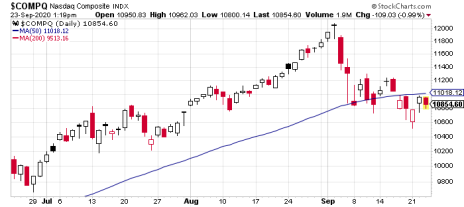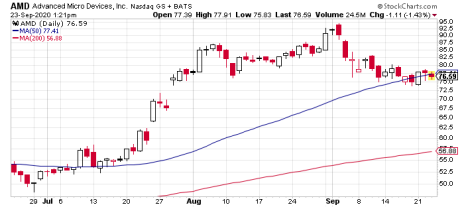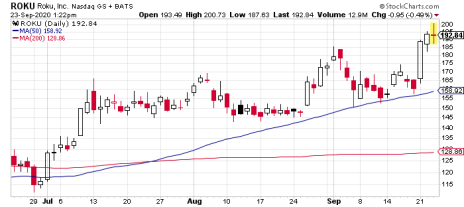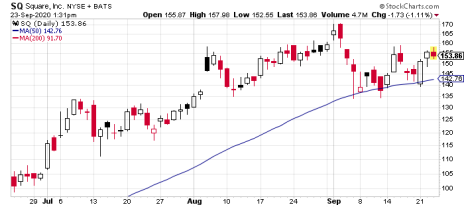Want to know what stocks are likely to lead the next leg up in the market? Relative strength is a good measuring stick. Here are two that are demonstrating it.
We’ll take a bull market frenzy any day of the week, with hundreds of stocks flying higher every day making it easy (well … almost easy) to make good money. But truth be told, when everything is headed up, it’s difficult to tell what the “real” leaders are—a rising tide lifts all boats, after all. To get a true gauge, you need to examine stocks’ relative strength.
And that’s the one consolation of a down or choppy environment: It makes it far easier to spot what stocks are truly strong, or at least are in pole position to make big moves once the overall market gets its act together. This isn’t some sort of chart voodoo—in fact, we’re not big into fancy chart patterns even during uptrends. Instead, charts are simply glances into supply and demand, telling you what Fidelity, T. Rowe Price and other big mutual fund empires of the world are thinking when it comes to that stock.
[text_ad use_post='129627']
Let’s look at the recent chart of the Nasdaq, from the accelerated uptrend through the latter part of summer to the two legs down (one in early September, the other starting late last week). You can use these three points to compare sets of stocks to see which ones are quietly showing relative strength and which ones are struggling.
(FYI, of the three points in time, the least important is when a stock topped—in fact, many that topped a few weeks ago could be in prime position to get going sooner than others.)
For instance, look at Advanced Micro Devices (AMD), a leading chip player with buoyant earnings estimates. In this case, the stock (a) topped with the Nasdaq in early September, (b) slipped lower initially and (c) has been toying with its 50-day line during this second leg down. All in all, it’s pretty similar to the overall index—not great, not bad.
2 Stocks Showing Relative Strength
But we’re looking for extraordinary, so what we really want to see is recent outperformance, even if it’s subtle. Take a look at Roku (ROKU), for instance—shares broke out just ahead of the Nasdaq peak and were yanked down after that, but held the 50-day line. And last Friday, the stock hit a much higher low (~158 vs. 150) and held its 50-day line (again), even as the Nasdaq slid to lower lows. Thus, when good news hit this week (a deal with NBC), the stock went bananas.
Another name that looked similar to Roku before it took off is Square (SQ), one of the new-age payment leaders. Again, it topped the same time as the Nasdaq, but held its 50-day line on the first leg down, and this week, hit a clearly higher low (139 vs. 134)—a sign it wants to head higher if the market can get out of its own way.
Each of these three stocks look like potential new market leaders. Their relative strength - among other factors - tell us that.
I’m keeping a close eye on all three of them in my Cabot Growth Investor advisory. If you want to know what other leading growth stocks I’m currently recommending, click here.
Editor’s Note: This post was excerpted from that latest issue of Cabot Growth Investor.
[author_ad]




